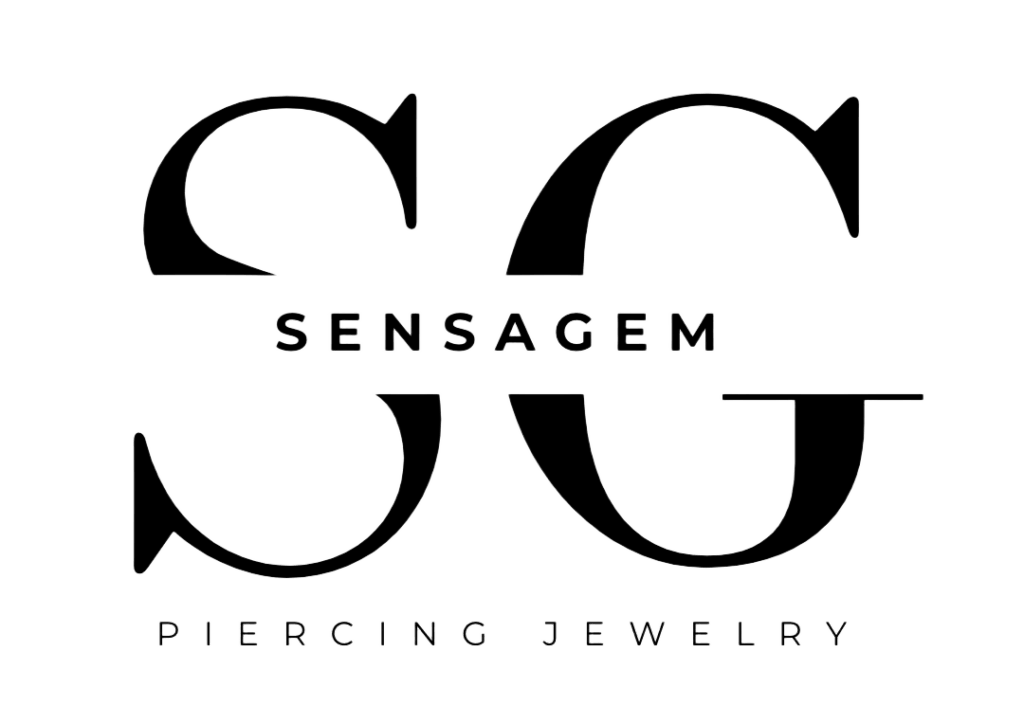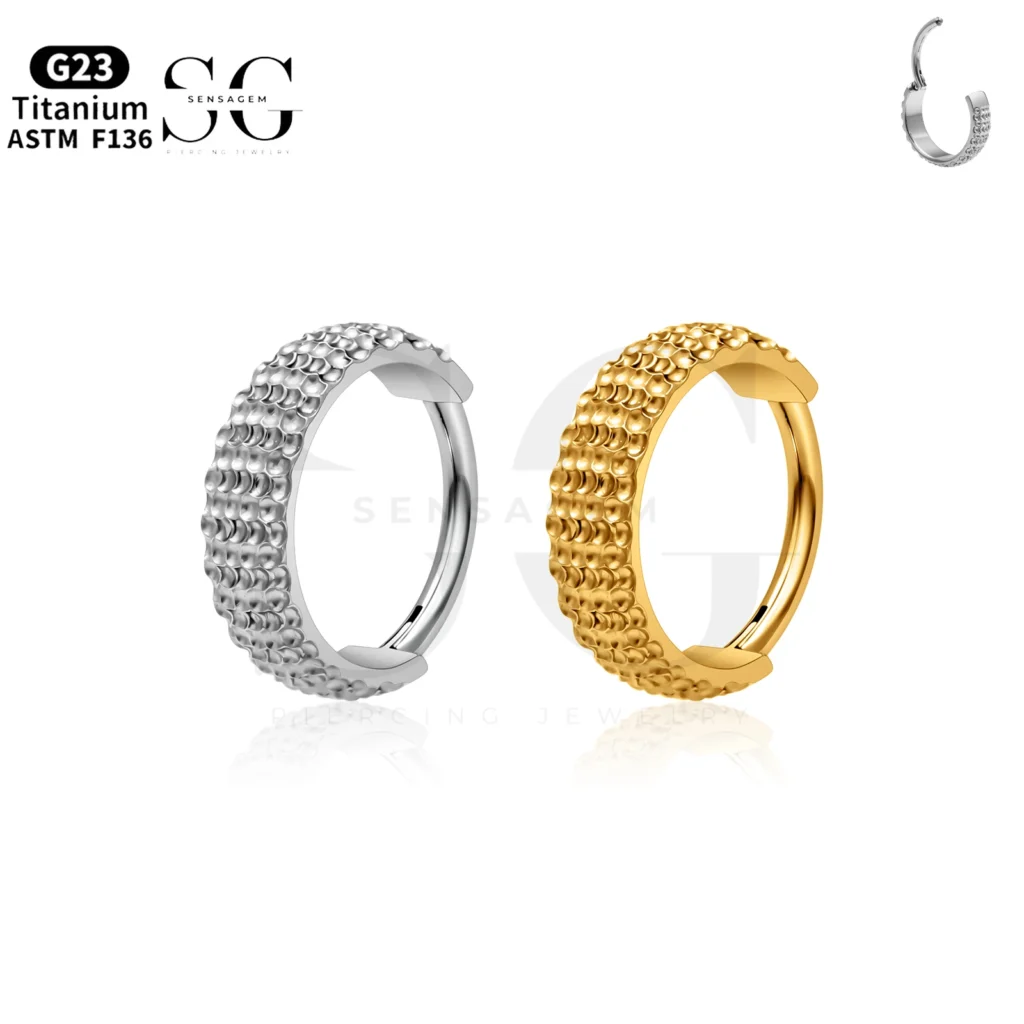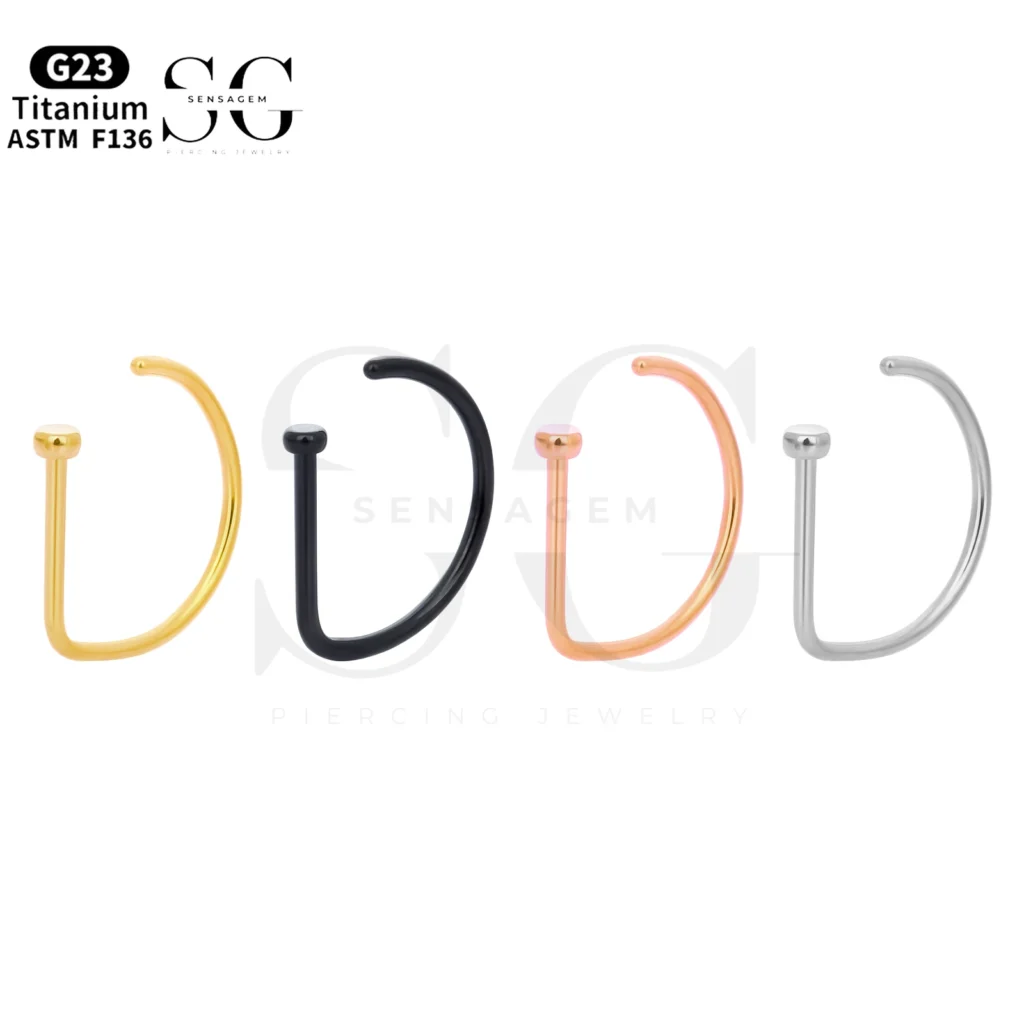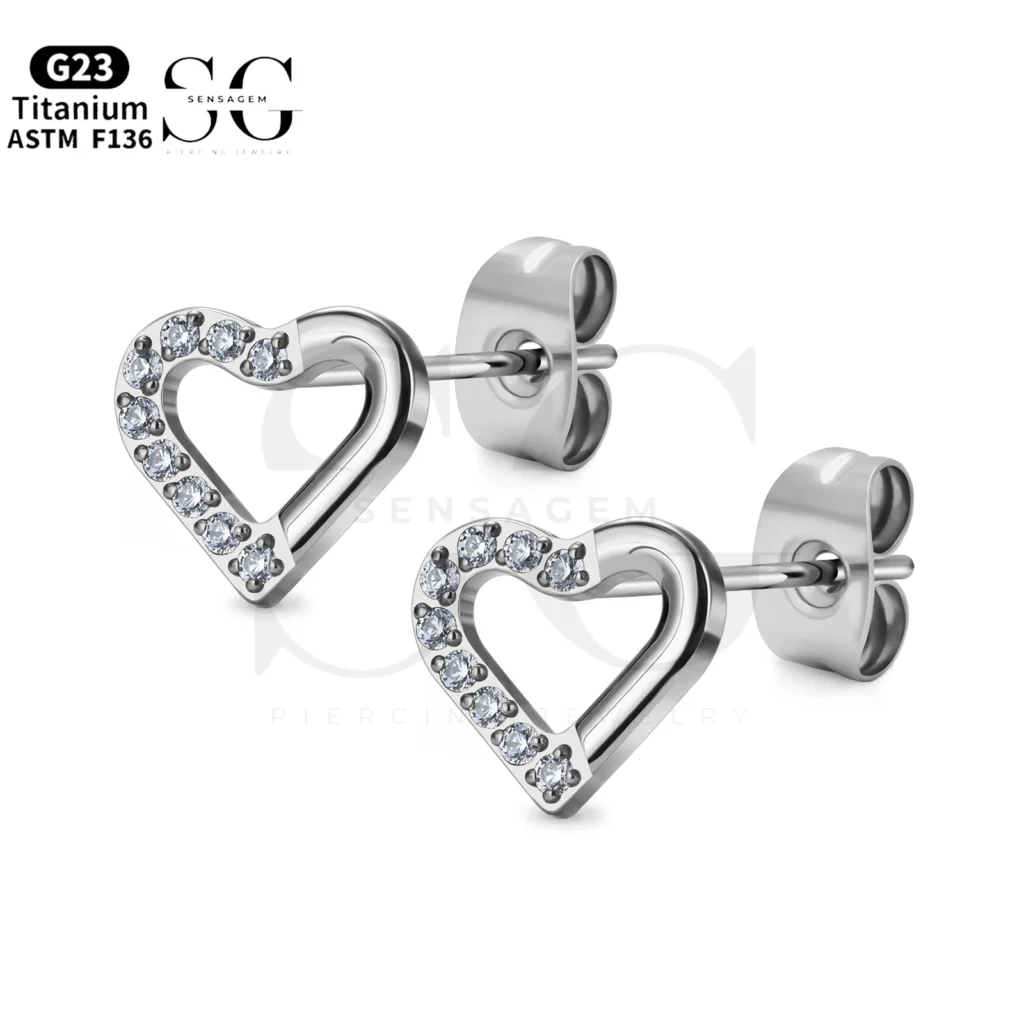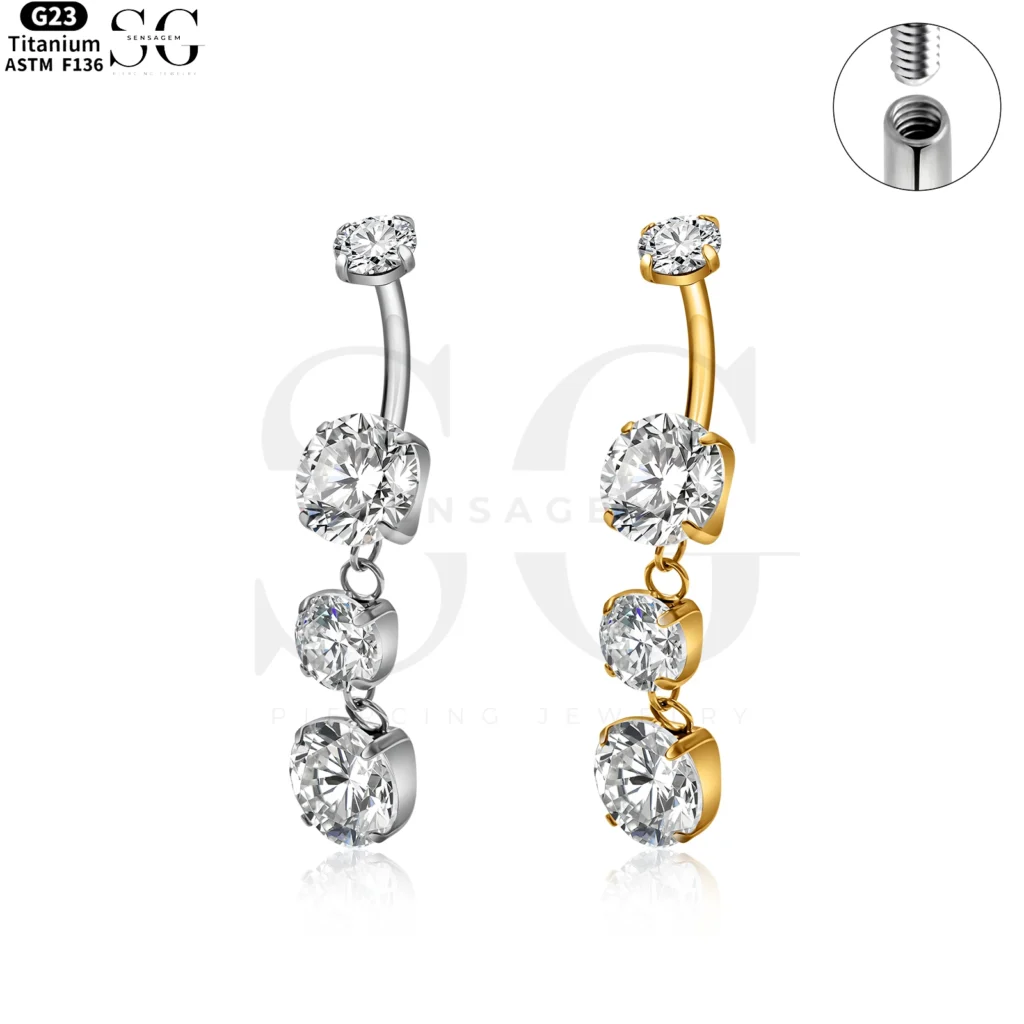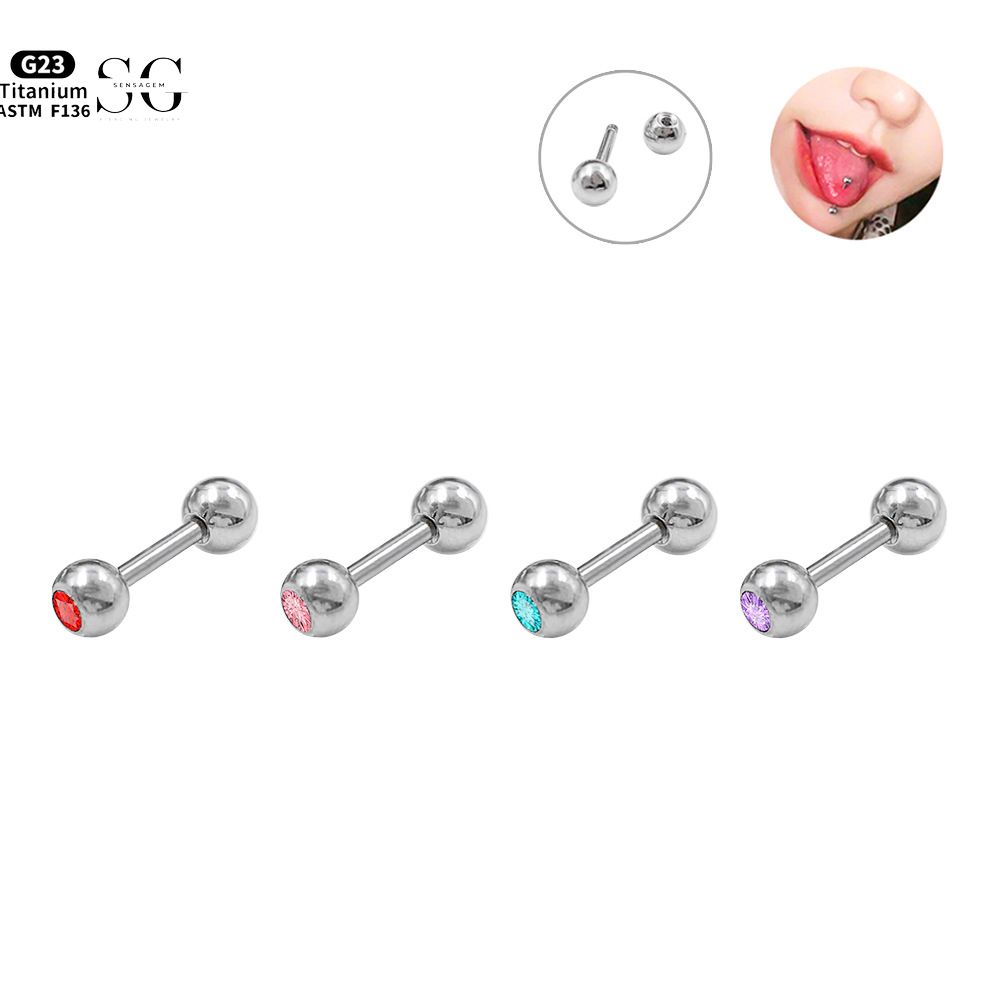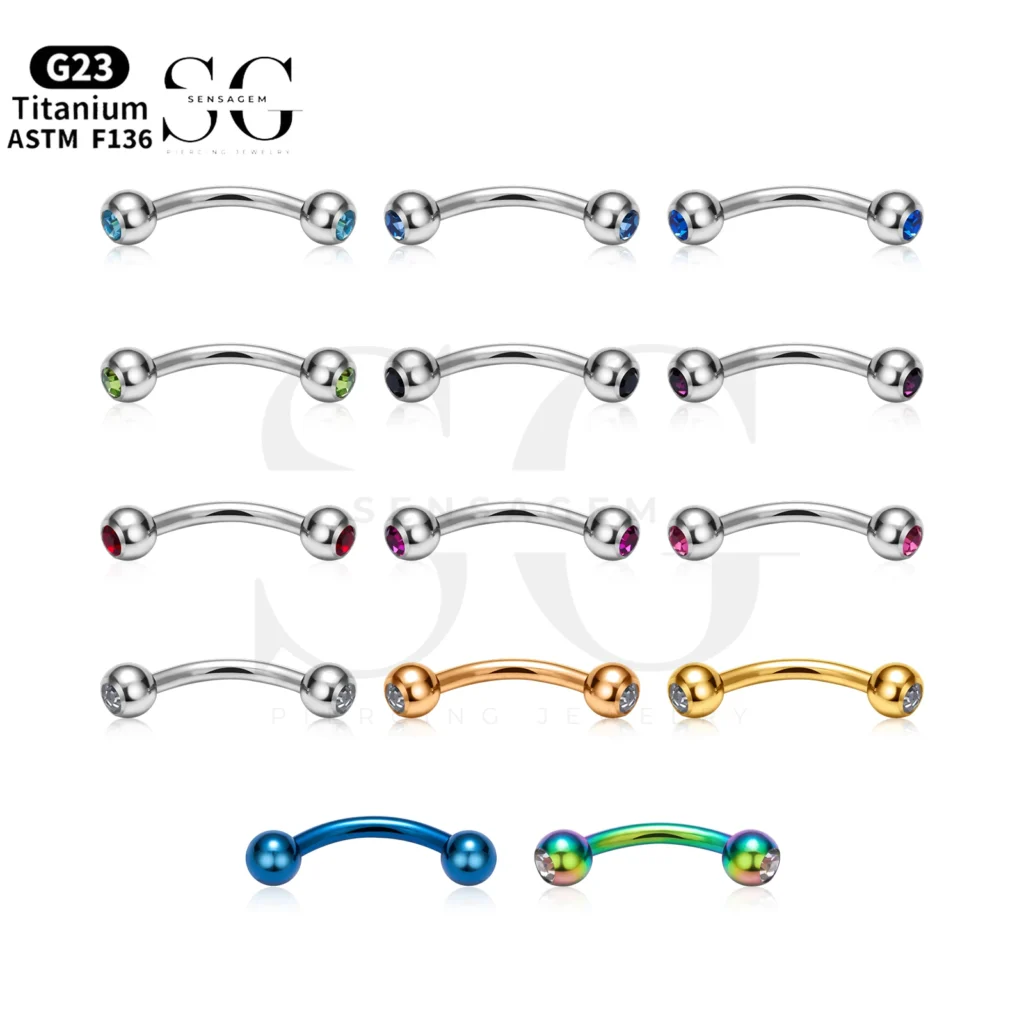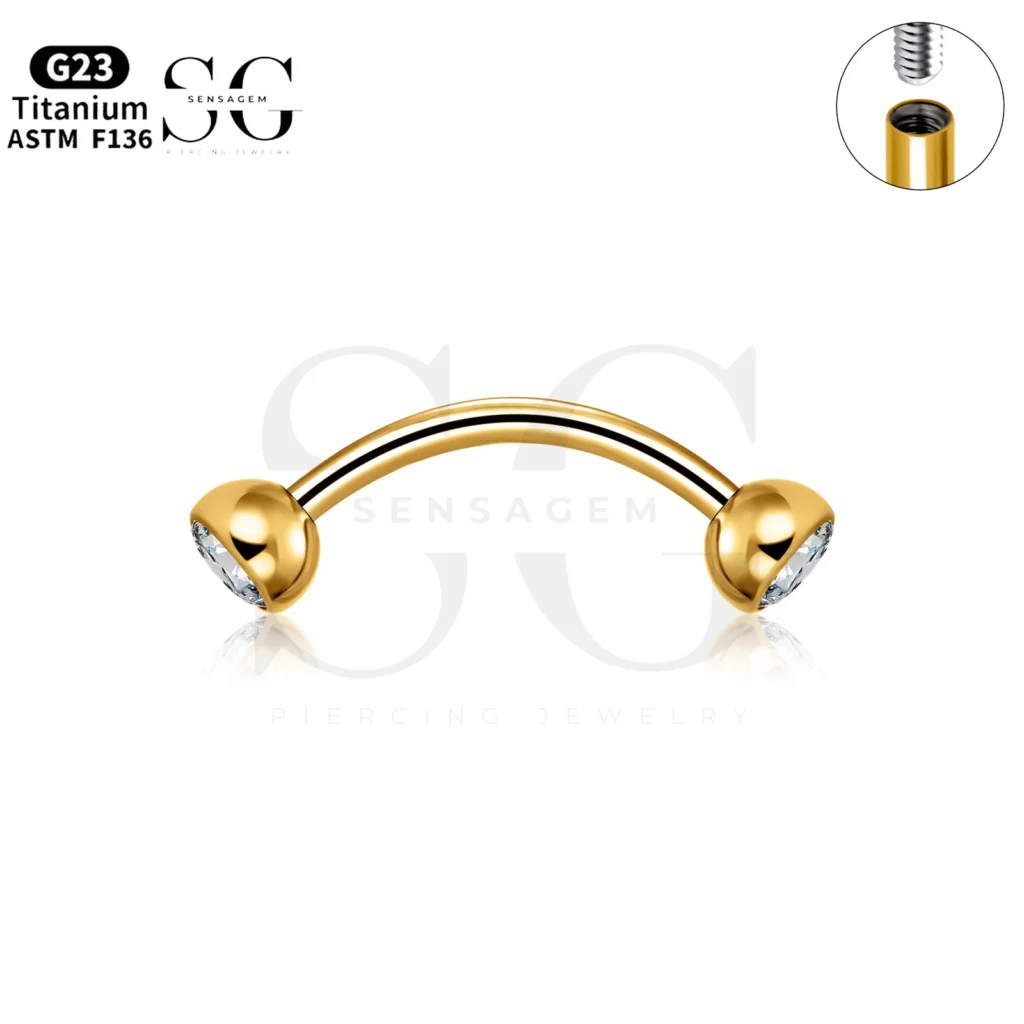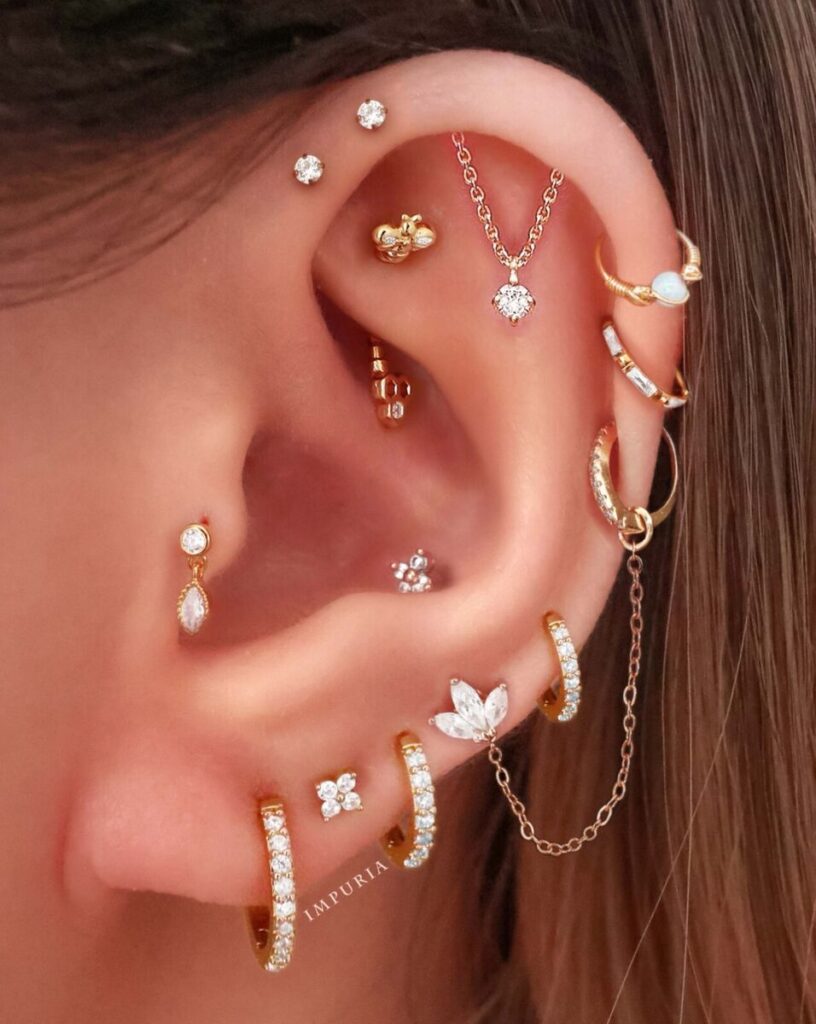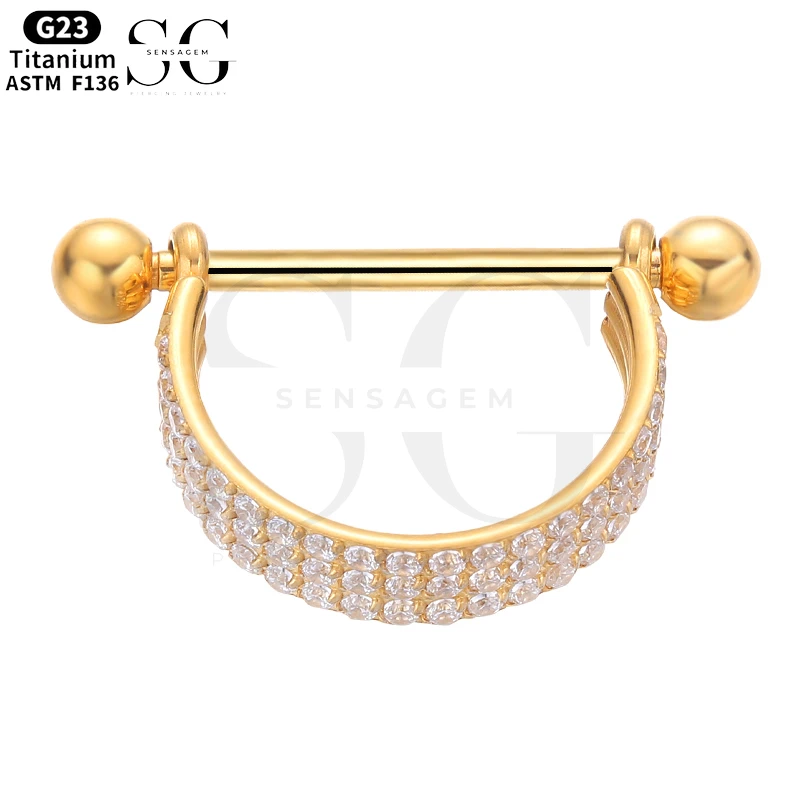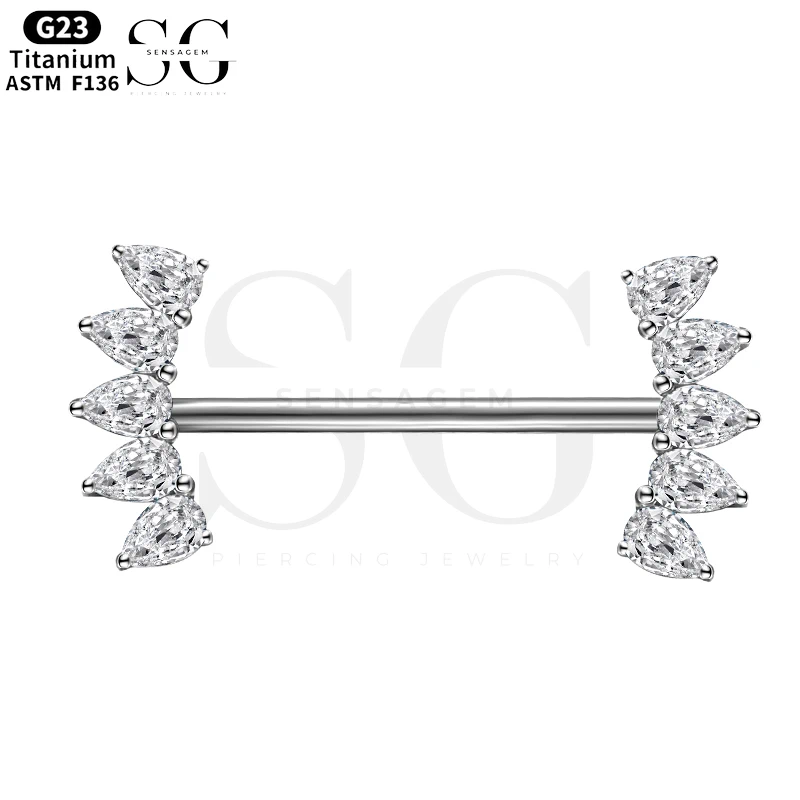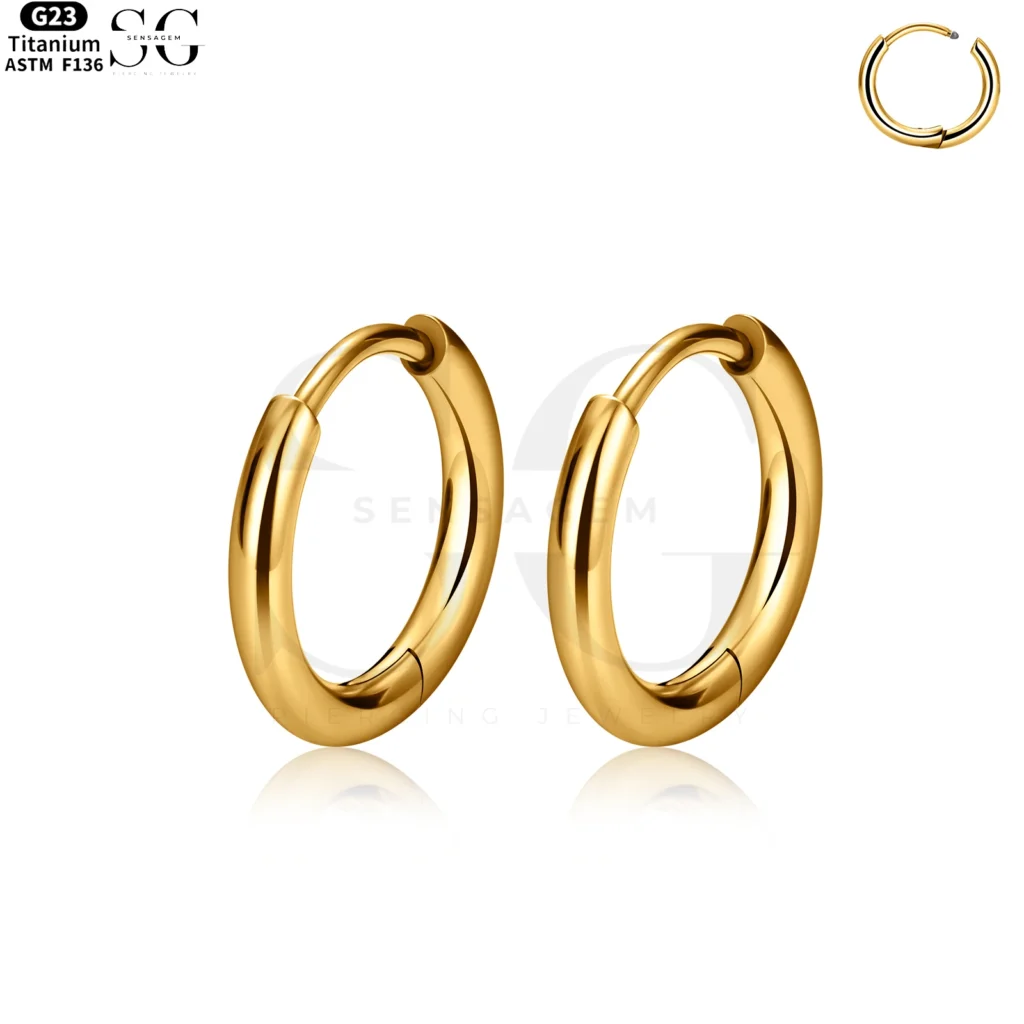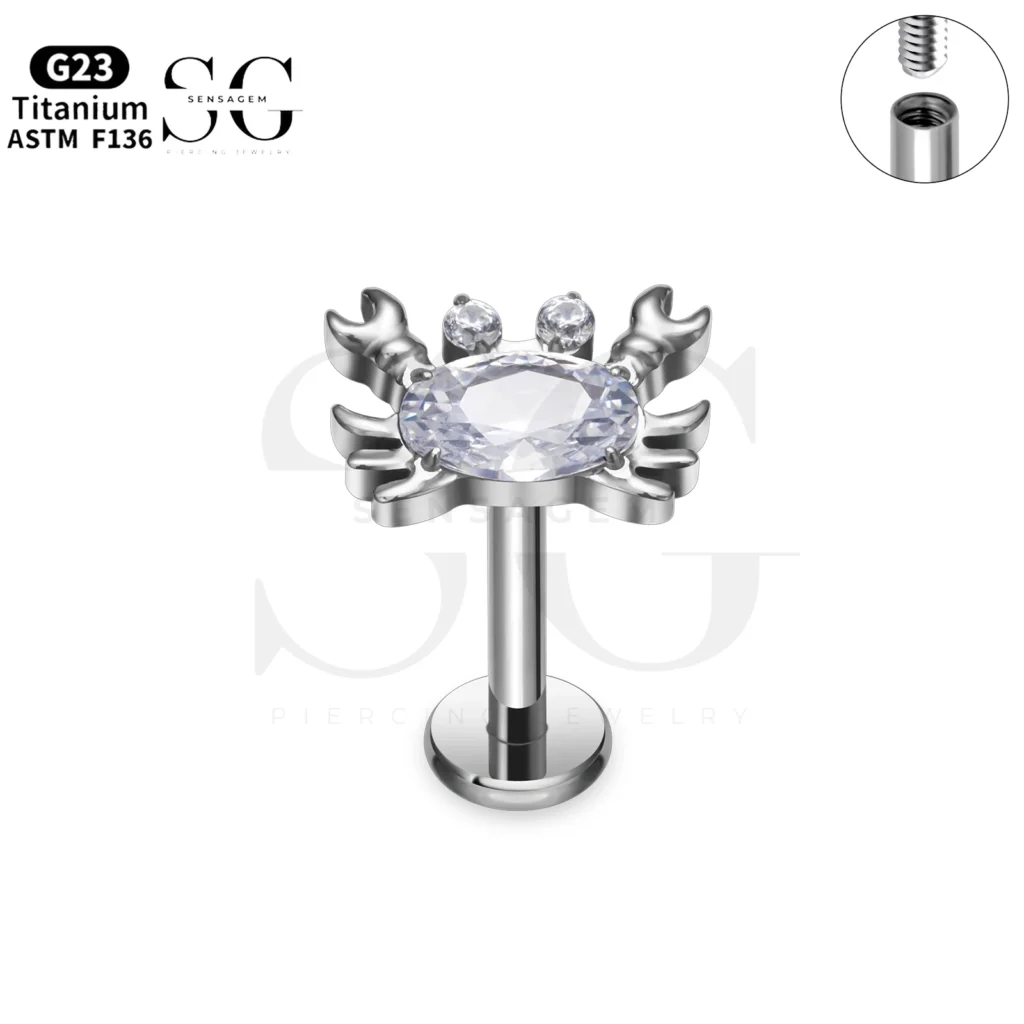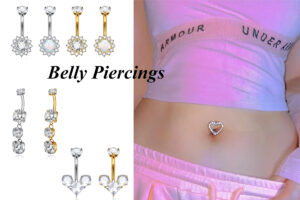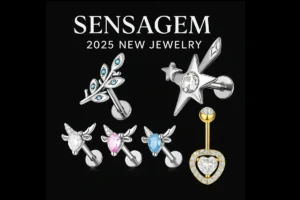1. Wstęp
If you’ve recently gotten a piercing or have been rocking your body jewelry for a while, you know that keeping your piercings clean is essential for both health and aesthetics. Cleaning piercing jewelry properly isn’t just about keeping it shiny and pretty — it’s about preventing infections, reducing irritation, and ensuring that your skin stays healthy as it heals. Whether it’s a nose ring, ear piercing, Lub belly ring, cleaning your piercing is crucial.
But here’s the thing — not all piercings are created equal, and neither are their cleaning needs. Each type of piercing requires its own set of steps and products to ensure it’s cleaned safely and effectively. So let’s dive into the best way to clean piercing jewelry across various piercings, z nose rings Do tongue piercings!
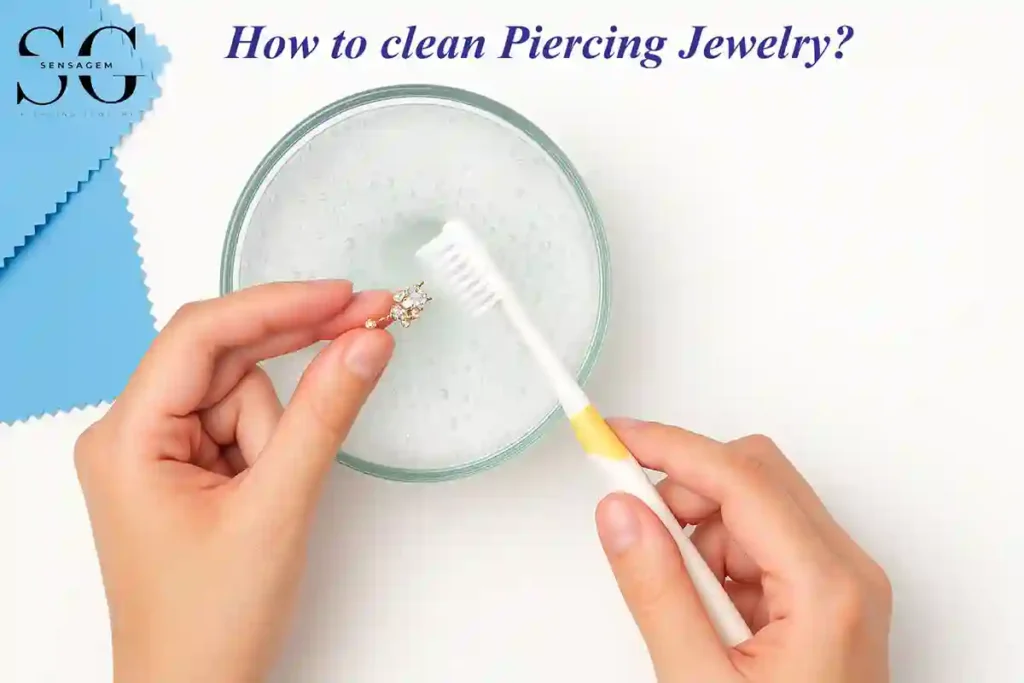
2. How to Clean Nose Rings, Nosowe kolczyki, and Nose Studs
Jeśli chodzi o nose piercings, they’re a bit trickier than your basic ear piercing because of the sensitive skin in the nostril area. A nose stud Lub nose ring is a fantastic way to express your style, but cleaning them the right way is crucial to avoid irritation and infection.
Cleaning Steps for Nose Piercings
Use a saline solution or a special nose piercing cleaner: Always use a nose piercing cleaning solution (saline is your best friend). The saline gently cleans the piercing and keeps the area free of bacteria without causing irritation.
Clean with a cotton swab: Gently apply the saline solution with a cotton swab around the piercing. Avoid using harsh scrubbing, as this can irritate the area.
Rinse with water: After cleaning with the saline solution, rinse with warm water to remove any residue. This helps to prevent dried saline from causing buildup around the piercing.
What to Avoid When Cleaning Your Nose Piercing
Avoid alcohol or hydrogen peroxide: These substances are too harsh for your piercing and can damage the tissue, potentially leading to an infection.
Don’t remove the jewelry too early: If it’s a new piercing, avoid changing the jewelry until it’s fully healed (typically 6-12 weeks depending on the piercing).
Common Problems & Solutions
How to clean a new nose piercing: With a new nose piercing, the main goal is to keep it clean and avoid touching it unnecessarily. Clean it gently, twice a day with saline, and avoid moving the jewelry during cleaning.
How to clean an infected nose piercing: If your nose piercing becomes infected, don’t panic. Clean it with saline solution and consult a professional piercer or healthcare provider if it gets worse. You may need to switch to a hypoallergenic material for your jewelry (like titanium).
Best Tools to Clean Your Nose Piercing
Cotton swabs I soft cloths are gentle on your skin and the jewelry. Use them to apply cleaning solutions and wipe around the piercing.
3. How to Clean Ear Piercings
Ear piercings are some of the most common piercings, and they come in many varieties — from lobe piercings Do helix piercings I industrial piercings. Whether it’s a new piercing or an old one, cleaning your ear piercing is essential to ensure your piercing heals well and stays infection-free.
Cleaning Steps for Ear Piercings
Use an ear piercing cleaner or saline solution: Whether you’re cleaning a lobe piercing or a helix piercing, the process is similar. Use a piercing cleaning solution or saline to cleanse the area. You can also use saltwater if you prefer a homemade solution.
Clean gently: Apply the saline to the piercing using a cotton swab Lub gauze pad. Don’t twist or turn the jewelry while cleaning, as it can irritate the piercing.
Rinse thoroughly: After cleaning, rinse with clean, warm water to remove any salt or cleaning solution that might irritate the piercing.
How to Clean Infected Ear Piercing
If your ear piercing is infected, you’ll need to clean it more frequently with saline solution and avoid touching it with dirty hands. Antibacterial soap I piercing cleaning sprays can also be effective for treating mild infections.
Best Tools for Ear Piercing Cleaning
Piercing cleaning sprays Lub ear piercing cleaning solutions are convenient and effective. These products are specifically formulated for cleaning ear piercings and help prevent infection without irritation.
How Often to Clean Your Ear Piercing
How often should I clean my ear piercing? Clean your piercing once or twice a day, especially during the first few weeks after getting it. Over-cleaning can cause irritation, so don’t overdo it.
4. How to Clean Belly Piercings and Belly Rings
A belly piercing Lub navel piercing adds a fun and trendy touch to your body, but it’s an area that’s prone to dirt and bacteria due to its location. Keeping your belly ring clean is important to prevent infection and ensure healing.
Cleaning Steps for Belly Piercings
Use saline solution: Just like with nose and ear piercings, saline solution is your go-to cleaner for a belly piercing. Apply it gently to the piercing area using a cotton swab.
Wash the area with warm water: After applying the saline, rinse the piercing with warm water to remove any residue. Make sure to pat the area dry with a clean cloth to avoid moisture buildup.
Unikaj podrażniaczy: Don’t use harsh chemicals like alcohol or hydrogen peroxide on your belly piercing, as they can cause the skin to dry out and increase the risk of infection.
Common Problems and Solutions
How to clean a belly piercing infection: If your belly piercing becomes infected, use saline solution to clean it regularly. If the infection persists, consider switching to hypoallergenic jewelry, jak na przykład titanium belly rings, and consult a healthcare professional if needed.
Best Tools to Clean Belly Piercings
Cotton swabs I soft cloths are great for cleaning belly piercings. They’re gentle enough to avoid causing irritation but firm enough to help you clean thoroughly.
5. How to Clean Tongue Piercings
A tongue piercing is another popular piercing that requires extra care because of its location in your mouth. Keeping it clean is important to avoid infections, bad smells, or complications while eating and speaking.
Cleaning Steps for Tongue Piercings
Use mouthwash or saline solution: The most effective way to clean a tongue piercing is by rinsing your mouth with mouthwash (preferably alcohol-free) or saline solution. Avoid using harsh alcohol-based mouthwashes that could irritate the piercing.
Brush your tongue: You can gently brush your tongue with a soft-bristled toothbrush to clean both your piercing and the surrounding area.
Rinse and repeat: After each meal, it’s a good idea to rinse your tongue piercing with mouthwash or saline to clear away any bacteria or food particles.
Common Problems and Solutions
How to clean a tongue piercing infection: If your tongue piercing is infected, make sure to keep the area clean with saline solution and rinse with mouthwash. Avoid touching the piercing and consider switching to a titanium tongue barbell to reduce irritation.
Best Tools to Clean Tongue Piercings
Alcohol-free mouthwash i a soft-bristled toothbrush are essential tools for maintaining a healthy tongue piercing. You can also use a tongue scraper to gently clean the piercing area.
6. How to Clean Eyebrow Rings and Eyebrow Piercings
Eyebrow piercings are bold, expressive, and can be a great addition to your style. Jednakże, they can be tricky to clean because they sit in a relatively sensitive area. If you’ve recently had your eyebrow piercing done, it’s important to follow the correct cleaning procedures to avoid infection and ensure proper healing.
Cleaning Steps for Eyebrow Piercings
Use a saline solution: The best way to clean an eyebrow piercing is with a saline solution. Gently apply the saline using a cotton swab to the piercing area. Avoid using products that contain alcohol or harsh chemicals.
Rinse with warm water: After applying saline, rinse the piercing with warm water to clear any residue that might irritate the skin.
Pat dry with a clean cloth: Use a soft, clean cloth to gently pat the piercing dry. Avoid using towels that may carry bacteria.
Common Problems and Solutions
How to clean an infected eyebrow piercing: If you notice redness, obrzęk, or discharge, your piercing may be infected. Clean it with saline twice a day and avoid touching it with dirty hands. If the infection worsens, consult your piercer or a healthcare provider.
Best Cleaning Tools for Eyebrow Piercings
Cotton swabs I soft cloths are perfect for gently applying cleaning solutions without irritating the area. You can also use a piercing cleaning spray specifically designed for eyebrow piercings to maintain hygiene.
7. How to Clean Cartilage Piercings, Tragus Piercings, and Helix Piercings
Cartilage piercings, w tym tragus piercings I helix piercings, are popular due to their unique look. These piercings are often in a more difficult-to-reach area, which means they require extra care and attention to keep them clean and infection-free.
Cleaning Steps for Cartilage and Tragus Piercings
Use saline solution or piercing spray: Dla cartilage piercings, you should clean them using a saline solution or an ear piercing cleaning spray. These solutions are gentle enough not to irritate the sensitive cartilage tissue.
Clean gently: When cleaning, avoid rotating or twisting the jewelry. Instead, gently clean the area around the piercing using a cotton swab Lub gauze soaked in saline.
Rinse thoroughly: After applying the saline, rinse with warm water to ensure that there’s no residue left behind.
Common Problems and Solutions
How to clean an infected cartilage piercing: Cartilage piercings can be prone to infection if not cared for properly. If you notice swelling, redness, or pus, gently clean the piercing with saline solution and make sure you’re not using any harsh chemicals or touching the area with unclean hands. If the infection persists, consult a professional piercer or medical professional.
How to clean a tragus piercing infection: If your tragus piercing is infected, increase the frequency of cleaning with saline and make sure you avoid wearing jewelry made from irritating materials. Always opt for Biżuteria hipoalergiczna like tytan to reduce the chances of irritation.
Best Tools for Cartilage and Tragus Piercing Cleaning
Cotton swabs I piercing cleaning sprays are excellent for these piercings. They help target the specific area without disturbing the healing tissue.
8. How to Clean Nipple Rings and Nipple Piercings
Nipple piercings are an intimate and unique form of body jewelry, and like all piercings, they require careful attention to avoid complications. Cleaning nipple rings is especially important to prevent infection, as the area is quite sensitive.
Cleaning Steps for Nipple Piercings
Use saline solution or specialized nipple piercing cleaner: To clean nipple piercings, you can use a saline solution or a specially formulated nipple piercing cleaner. Gently apply the solution around the piercing using a cotton swab.
Rinse with warm water: After applying the saline, rinse the area with warm water to remove any excess solution.
Dry the area: Use a clean, soft cloth to pat the area dry gently.
Common Problems and Solutions
How to clean an infected nipple piercing: Infected nipple piercings can be painful, but they are treatable with proper care. Clean the piercing with saline and avoid using anything that could further irritate the piercing, such as alcohol-based solutions.
Avoid tight clothing: After cleaning, ensure you wear loose-fitting clothing, as tight clothes can irritate the piercing and slow down the healing process.
Best Tools for Nipple Piercing Cleaning
Cotton swabs I soft cloths are ideal for cleaning nipple piercings. For more effective cleaning, you can also use a nipple piercing cleaner that’s specifically formulated for sensitive areas.
9. How to Clean Industrial Piercings and Lip Rings
Industrial piercings I lip rings are unique and often more visible, meaning they require regular maintenance to ensure they stay clean and free from infection.
Cleaning Steps for Industrial Piercings and Lip Rings
Use saline solution or piercing cleaning liquid: The best way to clean industrial piercings I lip rings is with a saline solution or a specialized piercing cleaning liquid. These will help prevent infection without causing irritation.
Clean gently: Apply the solution with a cotton swab around the piercing. Make sure to clean around the jewelry carefully without rotating or moving it.
Rinse and dry: After applying the cleaning solution, rinse the piercing with warm water and pat the area dry with a clean cloth.
Common Problems and Solutions
How to clean an infected industrial piercing: Industrial piercings are especially prone to irritation or infection because of their placement. If you notice signs of infection, clean the piercing with saline solution and avoid touching the area with dirty hands.
How to keep a lip ring clean: Clean your lip ring regularly with saline or a gentle mouth rinse (like alcohol-free mouthwash). Make sure not to twist the jewelry, as this can cause trauma to the healing tissue.
Best Tools for Industrial and Lip Piercing Cleaning
Cotton swabs I microfiber cloths are excellent for cleaning industrial piercings. For lip rings, A soft-bristled toothbrush can help clean around the jewelry without causing irritation.
10. Choosing the Best Piercing Jewelry Cleaner
When it comes to cleaning your jewelry, the cleaner you use matters just as much as the cleaning method. Using the wrong cleaner can irritate your skin and even damage your jewelry. Here are some of the best options available:
Saline Solution
The simplest and most effective option, saline solution is often the go-to for cleaning most piercings, z nose rings Do nipple piercings. It’s gentle and effective without causing any harm to your skin.
Piercing Cleaning Liquids
Many brands, jak na przykład Claire’s ear piercing cleaner I CVS ear piercing cleaner, offer specialized solutions that are designed to help you keep your jewelry clean while being gentle on your skin. These are especially useful for ear piercings, nose rings, and other piercings that require regular cleaning.
Alcohol-Free Options
If you prefer something even gentler, look for alcohol-free cleaning liquids that will clean your piercings without drying out the skin. These are particularly useful for sensitive areas like eyebrow piercings Lub nipple piercings.
11. Common Misconceptions About Piercing Jewelry Cleaning
When it comes to cleaning your piercings, there are several misconceptions that can lead to issues if not addressed properly.
Myth 1: Using Hydrogen Peroxide or Alcohol is Fine
While it’s tempting to use hydrogen peroxide Lub alkohol to clean your piercings, these substances can dry out the skin, irritate the tissue, and even prolong healing. Stick to saline solution or other piercing-friendly cleansers.
Myth 2: You Don’t Need to Clean Your Piercings Regularly
Neglecting your piercings can lead to infection or irritation. It’s essential to clean your piercings twice a day, especially during the healing period.
Myth 3: Cleaning Just the Jewelry is Enough
You need to clean the area around the piercing, not just the jewelry. Cotton swabs are excellent for reaching the area around the piercing and ensuring it’s thoroughly cleaned.
12. How to Prevent Piercing Infections and Irritation
Taking steps to prevent infection is key to maintaining healthy piercings. Here are some tips to avoid complications:
Keep Piercings Clean
Regular cleaning is the number one way to prevent infection. Use saline solution or other piercing-safe cleansers to wash your piercing at least once a day.
Avoid Harsh Products
Don’t use products containing alcohol or hydrogen peroxide. These can dry out the skin and hinder the healing process. Instead, choose alcohol-free or saline-based cleaning solutions.
Wear Hypoallergenic Jewelry
Opt for jewelry made from materials like tytan Lub SS316 Stal nierdzewna. These materials are hypoallergenic and less likely to cause irritation or allergic reactions.
13. Wniosek
Properly cleaning your piercing jewelry is essential to maintaining both its appearance and your health. Regular cleaning with gentle solutions like saline solution or piercing-specific cleaners can help prevent infections and irritation. Remember to choose hypoallergenic materials like titanium or SS316 stainless steel for your jewelry and avoid harsh chemicals like alcohol or hydrogen peroxide. Z odpowiednią opieką, your piercings will stay beautiful and healthy for years to come.
Are you a wholesaler, retailer, or importer looking to expand your piercing jewelry selection? Contact us today for competitive pricing and high-quality products tailored to your needs!
